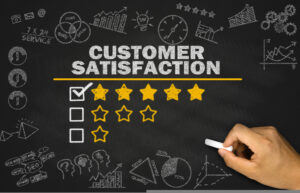“There is only one thing in the world worse than being talked about, and that is not being talked about..” – Oscar Wilde
There’s no such thing as bad publicity, right? Well, maybe. Publicity used to be hard to come by before the internet. Now, everyone can have an opinion on your product and share it with the rest of the world. While it’s true that it’s important to be part of the conversation, it needs to be for the right reasons.
In the 21st century, we are not only at the forefront of technological advancements, but also, communication advancement. In the past, when I would buy a product that I was unsure about, I would call up my dad and see if he had any advice on it. One person, who’s opinion still holds weight, but maybe not as much weight as it used to. Now, when buying a product, I can look at the consumer reviews on the company’s website or I can look at 3rd party review websites. I can verify that the reviewer purchased the product and see what she or many others think of the product.
As we talked about last week, 99.9 % of consumers look at reviews before making a purchase. So, I ask the question again, is any publicity good publicity? Maybe, maybe not. But the review system is not as simple as a star rating. What exactly are people looking for?
The Complexity of the Review System
Star rating
Would you get in an Uber if he had a 1-star rating? What if he had a 3-star rating? or a 4.1? What star rating is high enough for you to get in the car? I used to get in a taxi, barely knowing if the driver had a license, but now we can see if this particular driver will provide snacks and drinks or if he’s talkative. Positive reviews will gain trust with consumers. Peak purchasing occurs between 4.2 and 4.5 stars. A 5-star rating doesn’t always mean the best product. People can be skeptical of products with only 5-star reviews – negative reviews offer authenticity. In other words, it shows the reviews aren’t fake or paid for.
When interacting with star rating filters, research shows that more than half of reviewers will look at 1-star reviews. We can speculate that consumers are interested in common problems associated with the product. Most reviews are 1- or 5-star reviews. When companies respond to negative reviews, it allows customers to see that they are willing to address problems and concerns with a product.
Amount of Reviews
The more the better right? While that is true, it’s not exactly useful information. More is always better when it comes to reviews, but how many depends on the product type, category, and the seller. Picture this: you’re buying a shirt from a small online boutique. They have 5 or 6 positive and descriptive reviews. This could be enough for someone to click BUY. But, if it’s a larger expense, like a hot water heater or a table saw, you want to see a larger quantity of people talking about the good and the bad. The more money someone stands to lose on a product, the higher the number of reviews they prefer to see.
Review length
Getting a high rating on a product isn’t enough. Longer and more informative reviews are more helpful to a customer than reviews that are only have a star rating. Consumers are faced with an abundance of choices. Ask my spouse where we are going for dinner, and you can see how too many choices can affect a person in real time. A review that describes the pros and cons or tells a story will resonate more with the potential customers than one that just says, “great product”.
Red Flag words
In certain categories of products, consumers are searching for key words. Amazon has a feature now that allows you to read reviews with certain key words:
When I’m searching for a product for my 7-month-old son, I look in the reviews for words like ‘injury,’ ‘dangerous,’ or ‘hurt.’ I just bought a swing that will hang from a tree in my backyard. I scoured the amazon reviews for parents stating their kids were hurt. I was able to look at hundreds of strangers giving great reviews, and some giving bad reviews. Here are some examples:
The key to my purchase was that the device was not injury prone. The first 2 reviews were from devices that I chose not to purchase based on reviews that clearly described reasons the products are not safe. The third review described why the parent thought the swing was safe for their 4-month-old and being that my son was 6 months old at the time, I was able to commit to this purchase. When considering something else, such as central air units or mattresses, people may be looking at reviews that mention longevity. Consumers may search for different key words unique to the category of the product.
Recency of Reviews
Consumers feel that recency of reviews is even more important when buying a product that is new to them. When a review campaign for a company is discontinued or put on the back burner for too long, this will affect the volume of reviews. When reviews are dated, people can speculate. It allows the potential customer to wonder, “why has no one reviewed this company recently?”
Confirm or Deny: Any Publicity is Good Publicity?
It’s not that simple. We obviously don’t want negative reviews on a product, but they do provide a level of authenticity. We know that everyone won’t be happy with the same product. Negative reviews also give a company an opportunity to respond and engage with customers, demonstrating customer service and responsiveness. So, is any publicity good publicity? As long as the good outweighs the bad, its normal for everyone to have some “bad publicity”, in this case, negative reviews.
MAi Research continues to utilize consumer reviews and consider them when looking at products. Reviews provide us with an abundance of data. Come check out what we’re doing with it…














